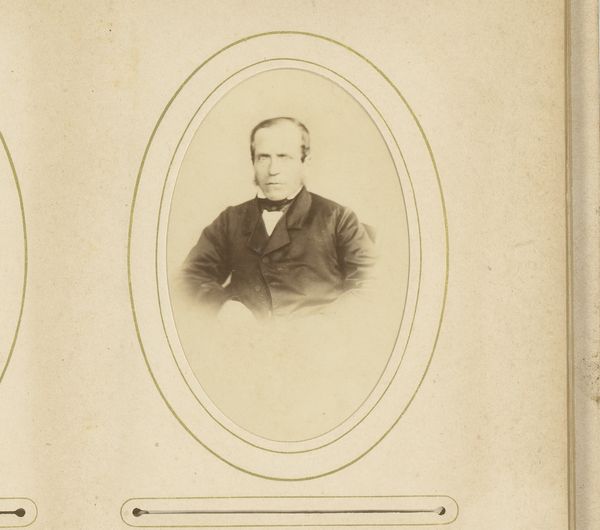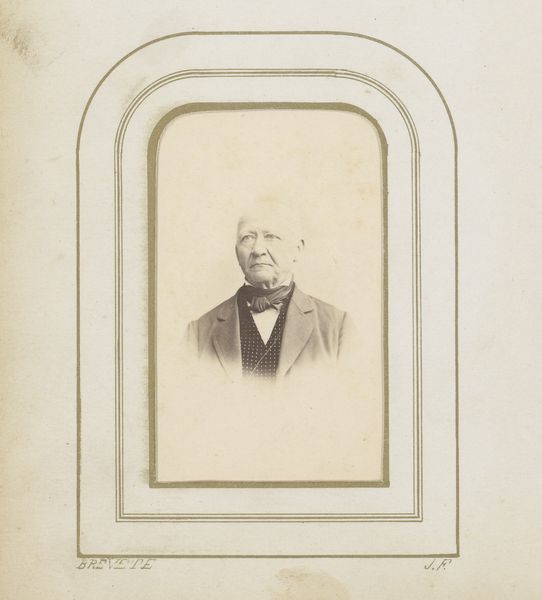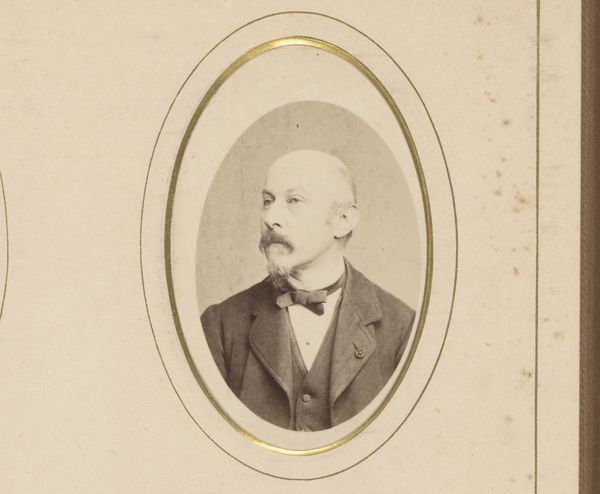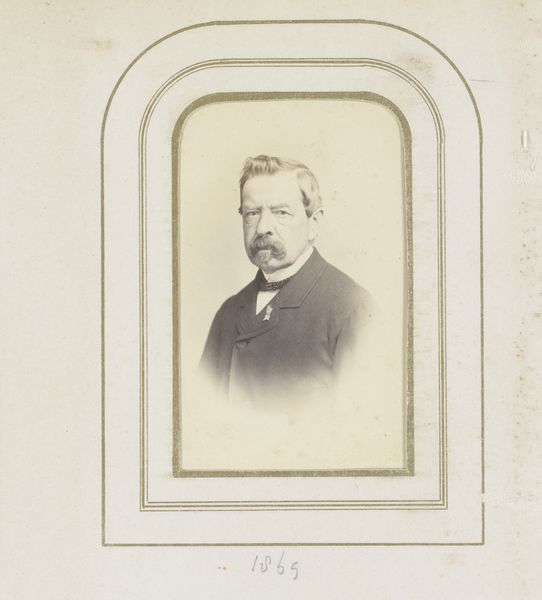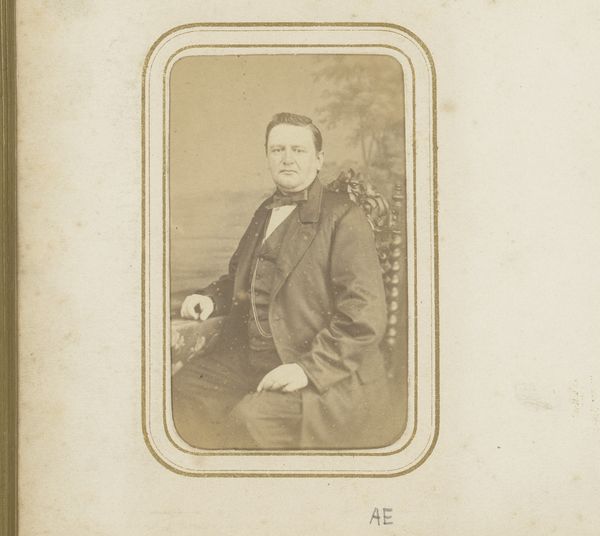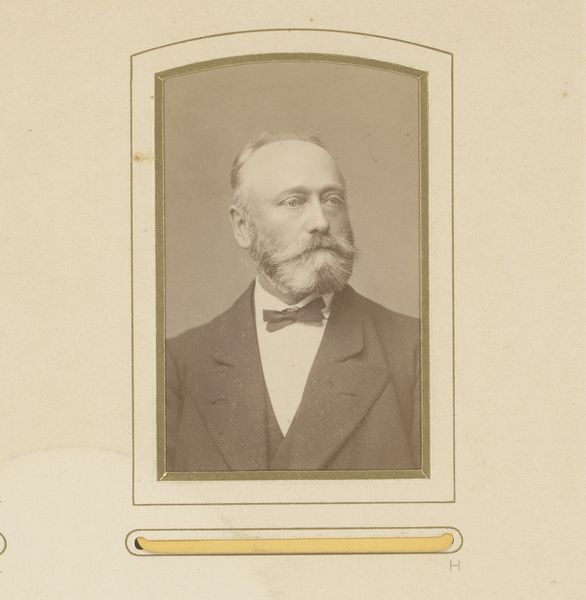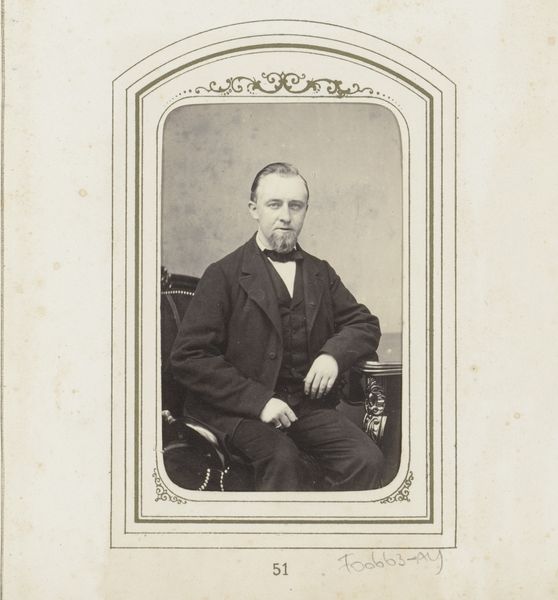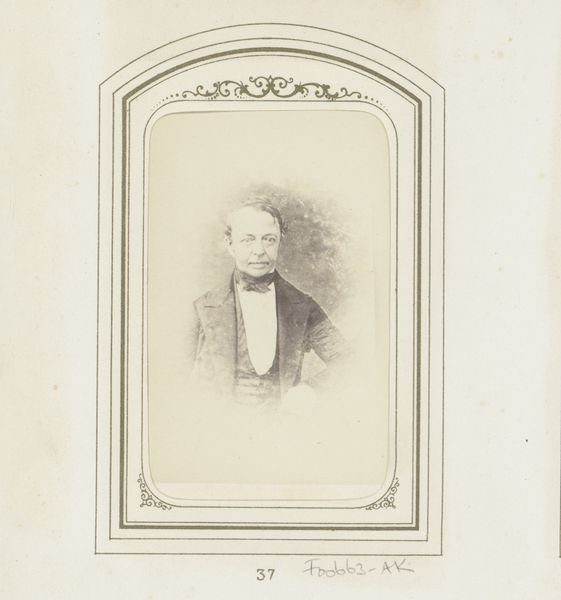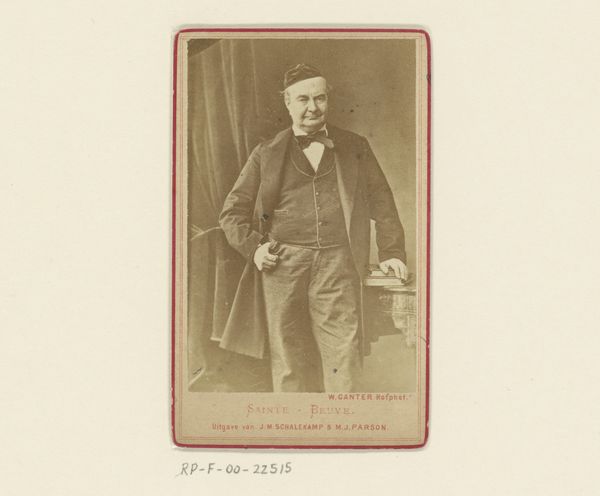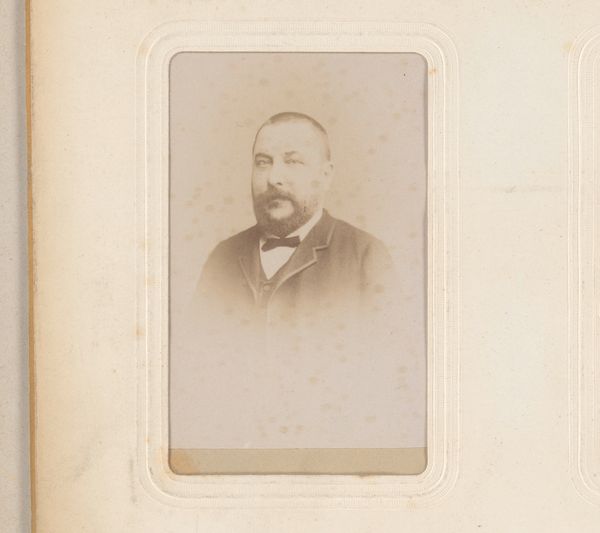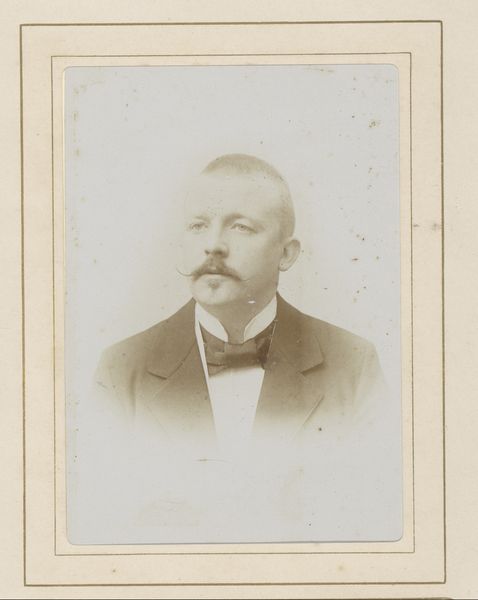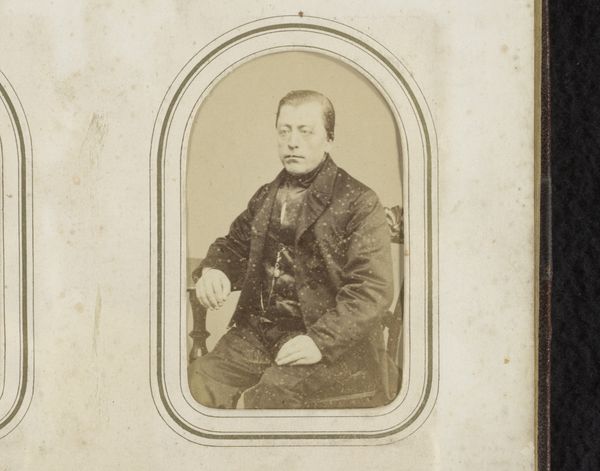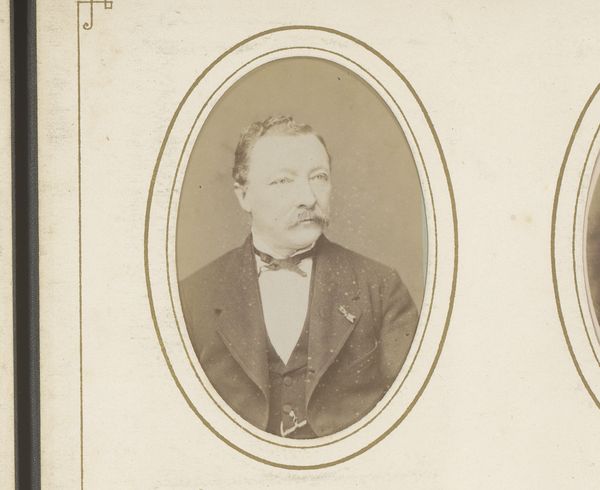
photography, gelatin-silver-print
#
portrait
#
photography
#
historical photography
#
gelatin-silver-print
#
realism
Dimensions: height 85 mm, width 52 mm
Copyright: Rijks Museum: Open Domain
Curator: Welcome. We are looking at "Portret van een man met bakkebaarden," a gelatin-silver print realized sometime between 1863 and 1894 by Henri Blanckart. Editor: My immediate impression is one of muted somberness. The tonal range is so limited, close to monochrome, with these subtle gradations of gray that communicate such stillness and reserve. Curator: The material is key here. This gelatin-silver print exemplifies the advancements in photographic technology that were democratizing portraiture. It enabled wider access to image production but also required the skilled labor of artisans mixing chemicals, preparing plates, and controlling the printmaking process. Editor: From a formal standpoint, the composition strikes me. The stark geometry of the inner frame contrasts so heavily against the slightly rounded corners holding his stern figure. There's also a curious sense of depth created by the multiple layers, both figure and frames seem meticulously designed to lock the viewer's eye. Curator: Precisely, this historical photograph exists both as artistic object and as a commodity produced and circulated in a burgeoning media landscape. Blanckart surely had a clientele in mind when he fashioned this image—a specific class eager to embrace new technologies and visually mark their status within a photograph that mirrored the painting styles of previous centuries. Editor: Notice too the figure’s averted gaze; this compositional choice generates a palpable psychological tension. The realism style adopted here suggests a commitment to capturing a true likeness, but at what cost to subjective emotion? Curator: His suit tells another story of labor and materials. We can almost feel the stiff texture of the cloth, and his carefully cultivated beard would suggest a specific social aspiration for the era, reflecting evolving notions of bourgeois masculinity that the photographic market seized upon, thereby standardizing notions of class. Editor: Perhaps we find that, beyond documentation, Blanckart’s photograph serves as a meditation on being. A poignant reflection on presence, captured, rendered still. Curator: Indeed, its value lies not merely in what is depicted but also in how its making reflects broader economic and social shifts during its moment of creation. Thanks for diving into this piece. Editor: Thank you. This artwork provides us an avenue into a captivating encounter with photographic aesthetics and a moment of shared humanity.
Comments
No comments
Be the first to comment and join the conversation on the ultimate creative platform.
